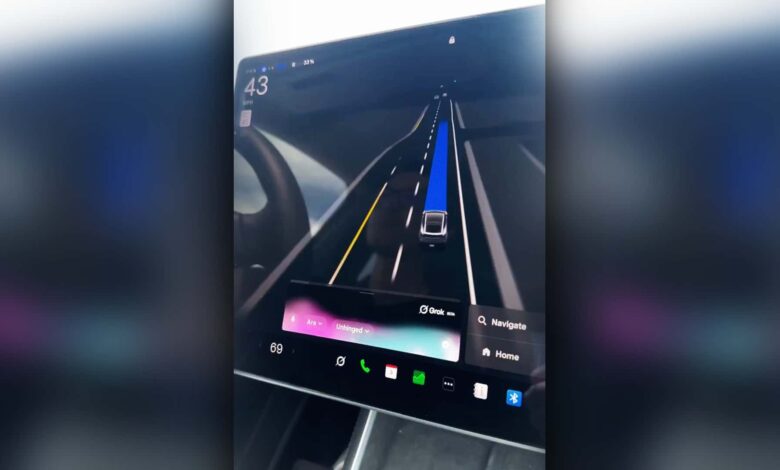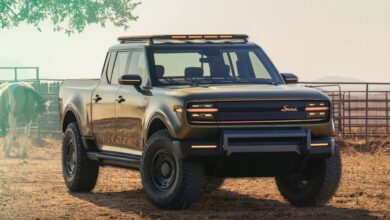Tesla’s Grok AI Has Landed. Here’s What We Know

- Grok, the artificial intelligence program developed by Elon Musk’s xAI subsidiary, is rolling out to certain Teslas via the Summer Update 2025.26.
- When used in the car, it is “designed to deliver accurate and insightful responses” to various questions.All new Tesla vehicles delivered on or after July 12 will have Grok available.
- The AI program sparked intense controversy for a series of pro-Hitler posts on X, Musk’s social media platform.
In-car voice commands are nothing new. For years now, drivers have been able to verbally ask certain cars to do specific things, like navigate to a particular destination, find a charging station or adjust the climate controls. But any driver that uses those commands knows they can be quite limited in function.
Artificial intelligence promises to change all of that by enabling voice control with something that truly understands what you mean and might even converse right back. And now, some Tesla drivers might be getting a real taste of what that means as xAI’s Grok rolls out to certain cars—right on the heels of a controversy that’s led many observers to question how it’s being programmed.
The automaker announced this weekend that voice-powered Grok will be enabled on all new Tesla vehicles delivered on or after July 12. All other Tesla models must have an AMD processor (which began around 2021), the latest vehicle software version 2025.26 and either a WiFi connection or the $9.99 monthly Premium Connectivity subscription. It may become available for other vehicles later. Grok will not require a subscription of its own.
“To enable and use Grok, tap the App Launcher > ‘Grok.’ You can also press and hold the voice button on your vehicle’s steering wheel,” the automaker said.
Interestingly, and unlike other voice assistants (including those supported by AI), it does not issue commands to the vehicle or its navigation system, and it does not change Tesla’s existing voice control system.
So far, most users who have posted videos to YouTube and social media seem to be asking Grok various questions. The Google Built-In software systems in various Volvo, General Motors and Polestar EVs works in a similar way.
Here’s Tesla influencer Kim Java trying it out:
As Tesla has explained, Grok features several different voice and personality settings ranging from “Storyteller” to “Unhinged.” Here’s what it can do on the latter:
Here’s another demonstration of its assistant capabilities, where Grok helps explain the distance between San Jose, California and Los Angeles:
However, it’s a surprising time to be launching Grok—which has so far only existed on xAI’s website and as part of the X social media platform owned by Musk—into Tesla vehicles, where it will no doubt see its widest deployment to date.
Last week on X, in response to several user prompts, Grok made several anti-Semitic and Adolf Hitler-praising comments. It singled out a user with an apparent Jewish surname and at one point renamed itself MechaHitler. (Though news reports say the two events are unrelated, X CEO Linda Yaccarino stepped down the following day.)
In response, xAI issued an apology for the bot’s behavior and said that “deprecated code made Grok susceptible to existing X user posts; including when such posts contained extremist views.” That code has been removed, the company said.
Whether it will behave similarly when used by Tesla drivers remains to be seen. Musk has repeatedly criticized other AI models, such as those from ChatGPT, to be too “woke” and “politically correct.” As such, xAI says that Grok is to be a “maximally based and truth-seeking AI” that is “extremely skeptical,” tells it “like it is,” and is “not afraid to offend people who are politically correct.
AI assistants have become a common and powerful feature on vehicles in China, and many automakers and tech companies hope to see the same happen in Western markets over time.
Got a tip about how Grok is doing in a Tesla? Contact the author: patrick.george@insideevs.com.
Source link

